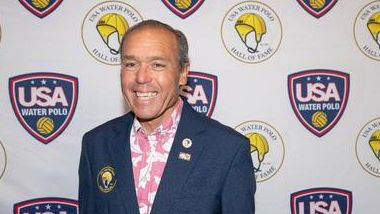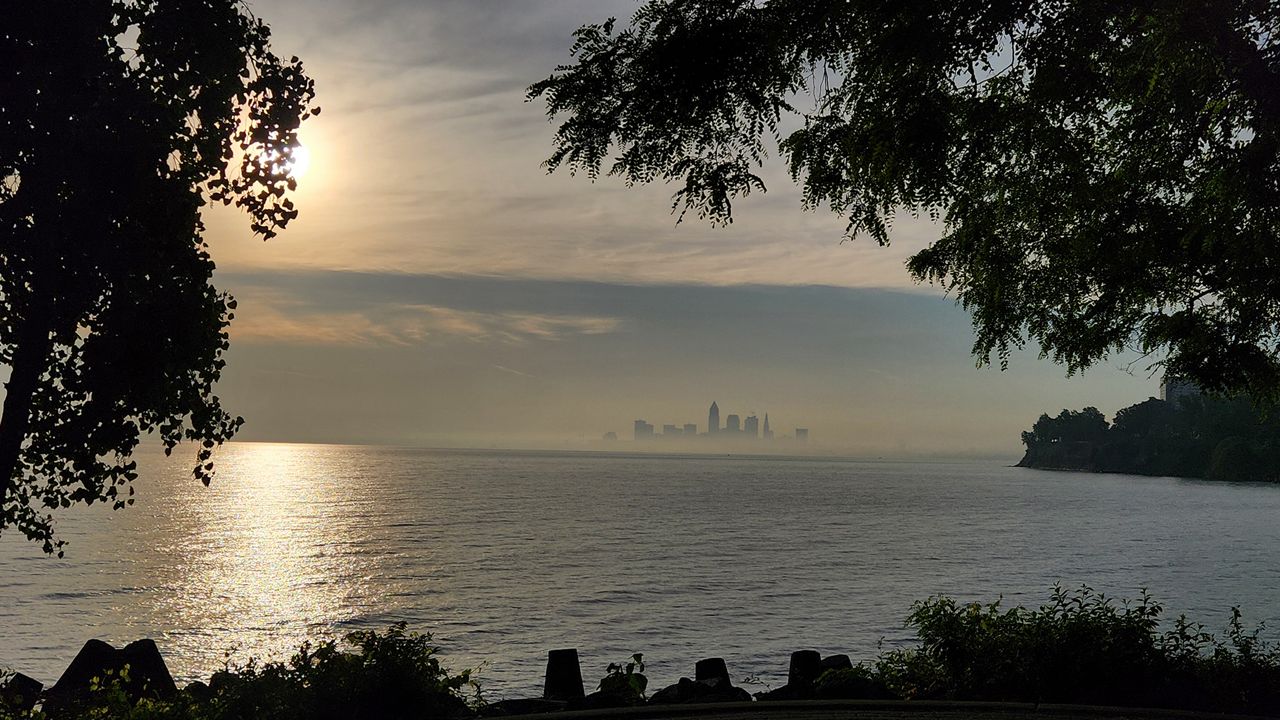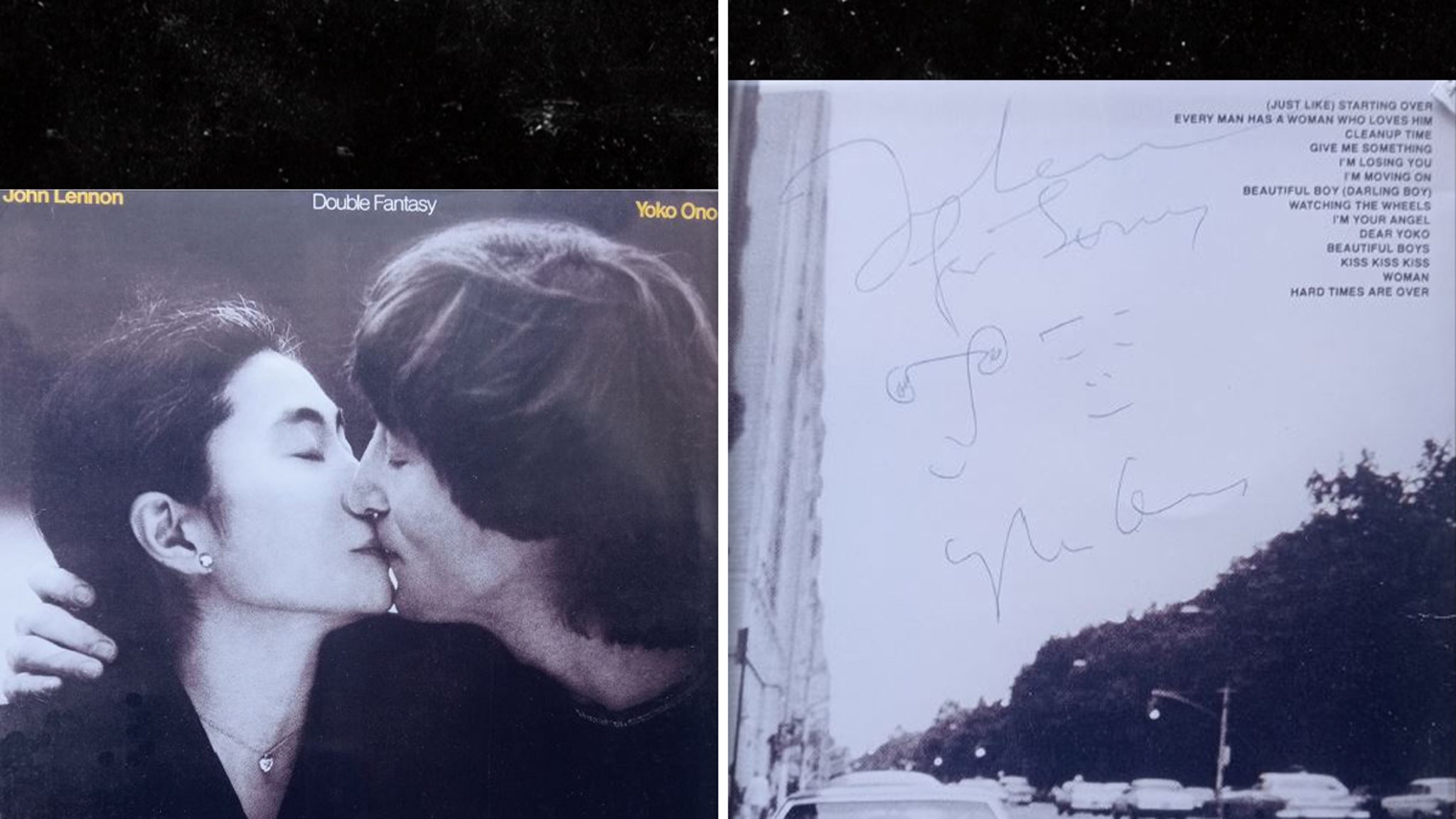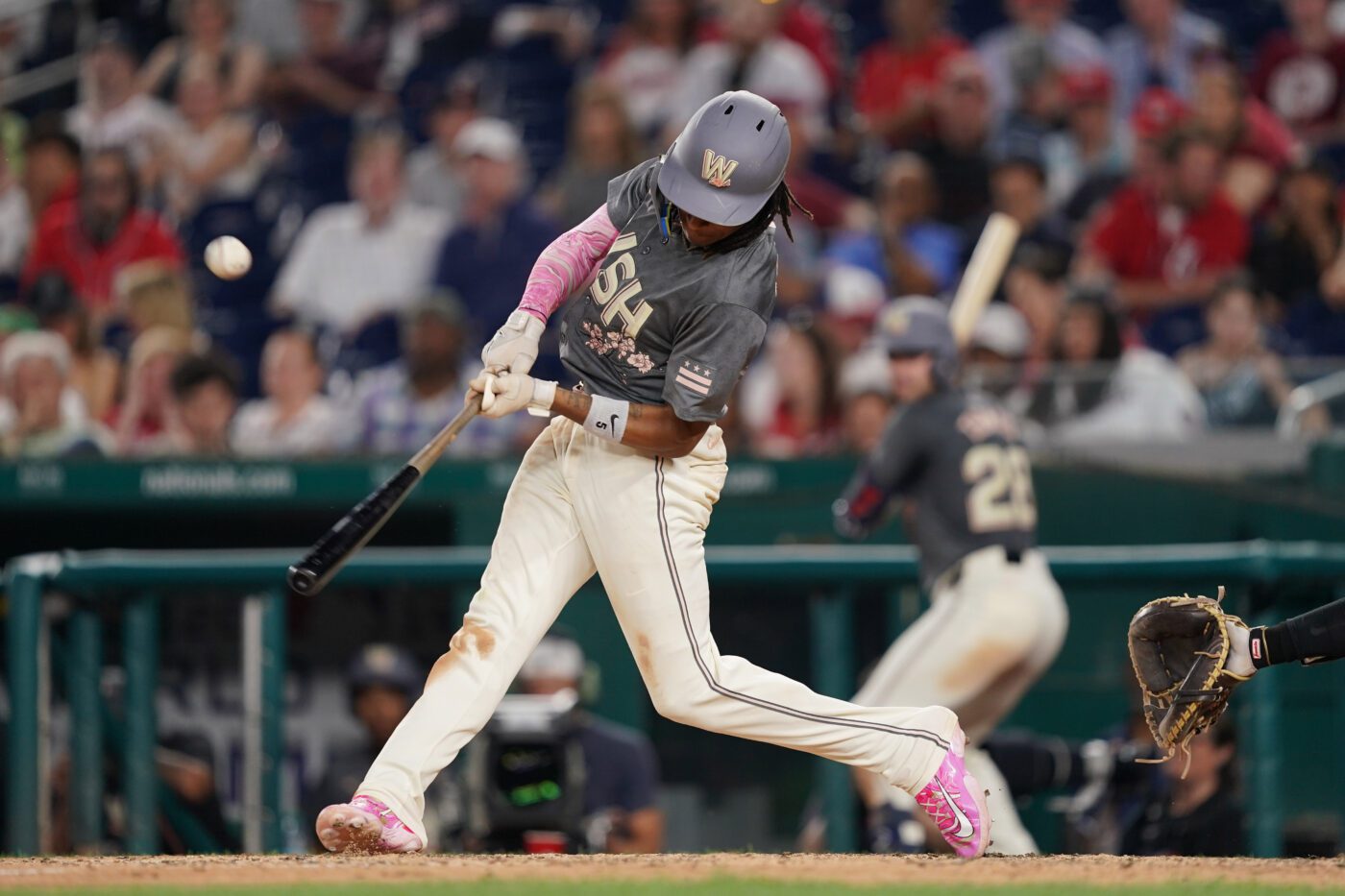Hawaii
Five Hawaii officials get HOF nod

The Hawaii Sports Officials Hall of Fame’s 2024 class of inductees will include well-known figures from the worlds of football, water polo, boxing and basketball.
The five august arbiters of competitive sport—Jim Beavers, Aaron Chaney, Abraham Pacheco, Kenichi “Stupe” Shimogawa and Thomas Yoshida—are fresh proof that the hall is not for those short of tooth or tender of foot.
“We are extremely excited to honor these five individuals for induction to the class of 2024,” said HSOHOF president Cal Evans. “This is our seventh class and we are very proud to celebrate their accomplishments.”
Beavers started officiating youth football games in Oklahoma in 1956 before moving to Hawaii in 1960. He joined the Oahu Interscholastic Association Football Officials Association in 1974 and spent the next 44 years officiating middle and high school football games, a run that included six Oahu Prep Bowl games and the 2000 HHSAA championship game. In 1999, he succeeded Roy Chong as OIA football commissioner, a post he held for 17 years.
Before he became an official, Chaney was a national championship athlete in water polo at UC Santa Barbara. His involvement in the sport provided the grounding he needed to spend more than 40 years as an acclaimed coach and internationally respected official. Chaney worked 20 NCAA men’s and 10 women’s championships including 15 championship games. He also worked the 2004 and 2008 Olympics in Athens and Beijing, including the men’s semifinal in 2004. Chaney also worked four FINA World Championships highlighted by the women’s bronze medal game. He is a member of both the UCSB and University of Hawaii Swimming Halls of Fame and was inducted to the 2023 USA Water Polo Hall of Fame as a coach and a referee.
Pacheco was also an accomplished athlete before becoming an official in his sport of choice. He was born in Hilo and raised in the sugar plantation camps of Wainaku, competing as a boxer in the 119-pound weight class before becoming a sanctioned official in the 1970s. Pacheco officiated numerous Golden Gloves and Police Activities League events and later worked fights in the North American Boxing Federation, US Boxing Association, the World Boxing Council and International Boxing Federation. He worked over 30 world championship fights across three decades.
Shimogawa, who is being honored posthumously, was a founding member of the Kauai Pop Warner football program in 1963 and served as commissioner of the league from 1964 to 2005, performing every job from on-field official to chain crew, timer to ball person. He was also instrumental in designating game proceeds to the local Shriners organization. His honors include National Federation of Interscholastic Officials Association Hawaii official of the year in 1997.He was also honored at the Hawaii State Legislature in 2011 and 2015 for his contributions to Kauai Pop Warner football. Shimogawa died in 2017.
Thomas Yoshida began officiating when he was just 19 years old, learning under the tutelage of HSO hall-of-famer Fuzzy Richards. Yoshida worked his first varsity basketball game with another hall-of-famer, Sam Delos Reyes, then proceeded to make a name for himself over 41 high school seasons, working 13 state championship games and 31 OIA championships. In 1993, he was hired to work in the Western Athletic Conference and spent 20 years in Division I and 26 years in Division 2 and NAIA. He continues to contribute by serving as rules analyst with Spectrum OC16 as well as presenting rules clinics on Oahu and the neighbor islands.
The five will be honored on Sunday, Sept. 1, at the Ala Moana Hotel. For reservations or to view a complete list of previous inductees, visit the HSOHOF web site at www.hawaiisportsofficialshalloffame.org.

Hawaii
Jonathan Okamura: Alarming New Report On Hawaii Public Schools Is One More Sign Of Legislative Failure

The Kids Count Data Book for 2024 was recently issued by the Annie E. Casey Foundation based in Baltimore, which has been reporting on the well-being of American children and their families since 1990.
For those like myself who advocate for ethnic equality in Hawaii and support public education as one of the principal means for its attainment, the report’s findings are distressing, although they are not necessarily surprising or new.
The report indicates that Hawaii’s public school students are not faring well academically in attaining basic skills such as reading and math and even just showing up for classes.
While most of the report’s data is not broken down by ethnicity, I’m certain that there are significant differences in educational performance among ethnic groups in the public schools because such disparities are evident in other areas of educational attainment, such as undergraduate representation at the University of Hawaii Manoa.
Since the report is concerned with the educational achievement of K-12 students who have yet to enter the job market, its findings clearly demonstrate the perpetuation of ethnic inequality for another generation due to the ongoing failure of the Legislature to fix the chronic teacher shortage problem.
Indigenous and ethnic minority students represent about 70% of those in the public schools.
The Number Of ‘Chronically Absent’ Skyrockets
In the Kids Count report, what I found most troubling was the 39% of Hawaii students who were “chronically absent,” which means they missed 10% or more days of school in 2022. The DOE school year is 180 days, so these students were absent at least 18 days or about three and a half weeks.
The 39% figure represented more than a doubling from the 19% in 2019, prior to the pandemic, which may have had an impact on the huge increase. It can be assumed that chronic absenteeism negatively impacts a student’s ability to proceed to the next grade level and ultimately to graduate from high school and enter college or the job market.
This is one area where the report did break down its data by ethnicity. It found that 59% of Native Hawaiian and Pacific Islander students, including Micronesians, Samoans and Tongans, were chronically absent in 2022.
A figure that high, a clear majority of those students, indicates that they probably are also well represented among the 14% of Hawaii students who did not graduate on time, according to the report.
Legislature’s Misplaced Priorities
I will cite information from Waianae High School, not to belittle its students, but because more than $6 million in funds were recently appropriated by the Legislature. One might assume that those funds are going to be used to address the school’s long-term chronic absenteeism problem, but one would be wrong.
Of Waianae’s 1,900 students, 54% are Native Hawaiian or Pacific Islander, 8.7% Asian, 3.3% Caucasian and 22% Hispanic.
According to the DOE Strive Hawaii report on the school’s academic performance in 2021-2022, Waianae had a graduation rate of 81%, which refers to the percentage of 12th-graders who graduated on time with their classmates.

As for being chronically absent, in 2022, 58% of Waianae students missed 15 or more school days, which might be attributable to the pandemic’s after-effects, but the state average was much lower at 32%.
Despite those troubling statistics in the DOE Strive report, Rep. Cedric Gates, a Waianae graduate, announced funding last week for building a new artificial-turf football field at the school. Gates, who represents Waianae and nearby communities in the Legislature, led the $6 million legislative initiative.
He told a television news reporter, “It’s so important to get Waianae High School up to the same standards as the other high schools in the state,” but he wasn’t referring to academic standards, such as increasing its graduation rate or its college-going rate of 28%.
Gates continued, invoking the arguments used to support race-based affirmative action programs in college admissions as leveling the playing field, but literally referring to athletic fields: “It gives us a fair playing field to compete with the other schools because when you’re competing on grass and you’re transitioning over to a school with turf, it’s just a different field.”
Which Playing Field Do We Really Want To Even?
The $6 million Waianae High School received could have been used to hire more fully licensed teachers, instead of relying on unqualified emergency hires, or additional counselors to keep students on track to graduating on time or to urge them to take Early College courses available on campus.
Those teachers and counselors could have encouraged and supported more of their students to proceed on to college at UH Manoa, UH West Oahu, Leeward Community College or elsewhere so that they can compete fairly in the job market and not just in football.
Since only 13% of the Waianae community has a college education, teachers and counselors, rather than parents, can play a major role in their students’ further education.
Hiring more DOE staff to fill vacant positions obviously was not the policy priority of the Legislature.
Some might counter that the community wanted a new football field, and legislators responded positively to their wishes. But lawmakers don’t necessarily provide their constituents what they desire, such as publicly funded election campaigns that are supported by a majority of Hawaii voters.
Hiring more DOE staff to fill vacant positions obviously was not the policy priority of the Legislature, which instead allocated almost $600 million this past session for school facilities, including Waianae’s new football field.
While such new facilities won’t be completed before the primary and general elections, photos of groundbreaking or signing ceremonies for them with the governor can be prominently displayed in a legislator’s campaign advertisements and website.
Those ads reveal the personal priorities of many but not necessarily all legislators — to get themselves reelected rather than to address their constituents’ needs and desires for a more equitable and rewarding future for their children.

Sign up for our FREE morning newsletter and face each day more informed.
Hawaii
Southwest under investigation after Hawaii flight quickly drops within 400 feet of ocean

HONOLULU (HawaiiNewsNow) – The FAA is investigating a Southwest aircraft bound for Lihue suddenly dove 4,000 feet in a minute just 400 feet above the ocean.
Bloomberg News reported the incident first and said the plane came within 400 feet of falling into the ocean.
On April 11, the aircraft headed for Lihue ended up flying back to the Daniel K. Inouye International Airport.
Retired Pilot Patrick McNamee analyzed the flight map on Flight Aware and said weather conditions made it difficult for the plane to land safely on Kauai.
“So, they could only descend to 400 feet off the water in order to take a look to see if they can get in. In this case, they descended 400 feet, they could not find, or they couldn’t see through the clouds to land,” said McNamee. “So, they went around, and I think that scared the passengers.”
A Southwest memo to pilots said a less-experienced first officer inadvertently pushed the control column forward, then cut the speed, causing cockpit alarms to go off before the captain ordered an aggressive climb.
“I don’t believe that anything was unsafe in this. It might have been a little aggressive, but when you do go around in an airplane, you use full throttle, and it’s like taking off again,” said McNamee. “So here you are coming, coming in for a landing, descending, and when you can’t see the runway, you have to go around; when you have that power, it’s a very, very aggressive feeling.”
“It pushes you back in your seat, the nose goes up, and it climbs away from the ground,” McNamee said. He can see how that could have contributed to the scare factor.
However, there have been other incidents that have made people hesitant to fly.
In 2022, eleven people were seriously injured on a Hawaiian Airlines flight from Phoenix to Honolulu following severe turbulence.
“After hearing about that one, I’ve been more conscious of making sure I have my seatbelt even when I’m just sleeping on the plane,” said Brenna Cregge of Mililani.
In a separate flight, a United Airlines flight made a steep dive after taking off from Maui’s airport.
Southwest released the following statement.
Nothing is more important to Southwest than Safety. Through our robust Safety Management System, the event was addressed appropriately, as we always strive for continuous improvement.
Copyright 2024 Hawaii News Now. All rights reserved.
Hawaii
Southwest flight makes “excessive descent” during go around in Hawaii | Flightradar24 Blog

Indian authorities are probing a loss of separation incident that occurred on 8 June in Mumbai. Air India flight 657 was cleared to depart Mumbai’s Runway 27 while IndiGo flight 5053 was cleared to land at the same time. According to ADS-B data received from both aircraft, at their closest point the flights were 1,671 apart.
-

 News1 week ago
News1 week agoIsrael used a U.S.-made bomb in a deadly U.N. school strike in Gaza
-

 World1 week ago
World1 week agoFrance to provide Ukraine with its Mirage combat aircraft
-

 World1 week ago
World1 week agoWorld leaders, veterans mark D-Day’s 80th anniversary in France
-

 World1 week ago
World1 week agoRussia-Ukraine war: List of key events, day 833
-

 Movie Reviews1 week ago
Movie Reviews1 week agoInsane Like Me? – Review | Vampire Horror Movie | Heaven of Horror
-

 News1 week ago
News1 week agoNonprofit CFO Accused of 'Simply Astonishing' Fraud
-

 Politics1 week ago
Politics1 week agoGeorge Clooney called White House to complain about Biden’s criticism of ICC and defend wife’s work: report
-

 Politics1 week ago
Politics1 week agoNewson, Dem leaders try to negotiate Prop 47 reform off California ballots, as GOP wants to let voters decide




















